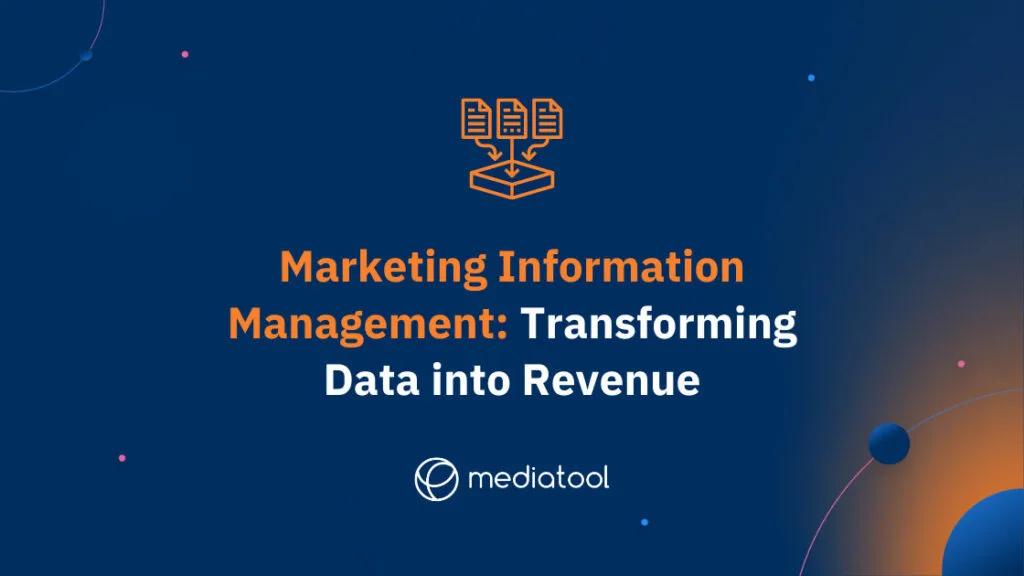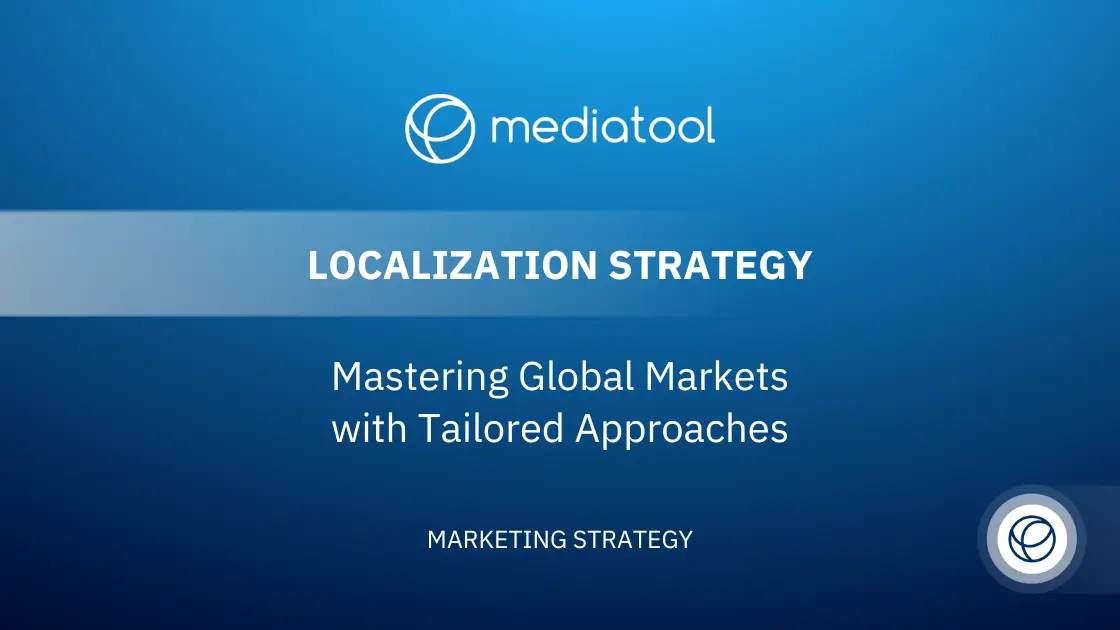Creating data-driven strategies is not a new concept. Yet, successfully implementing these tactics might be difficult.
In this article we’ll talk about marketing information management; from a data standpoint, we’ll break down the various components, data types you should be tracking, and some things to consider when developing a strategy.
Let’s get into it.
What is Marketing Information Management?
Marketing Information Management (MIM) is an intricate process involving the collection, analysis, and application of marketing data to craft informed marketing strategies.
It operates much like a sophisticated Marketing Information Management System, meticulously gathering and processing internal data, market research, and consumer behavior insights.
By leveraging marketing information systems, marketing teams can harness valuable insights from customer data, enhancing marketing campaigns and overall marketing efforts.
Imagine you’re at a high-end restaurant, undecided about which wine to select from an extensive list. Here, the sommelier, with their deep understanding of wine varieties, plays a crucial role in guiding your choice.
Similarly, MIM acts as your business’s sommelier – utilizing data management tools, marketing research systems, and competitive intelligence to select the optimal marketing strategies.
It’s about turning market data and internal data competitive intelligence into actionable insights, ensuring marketing information is organized and used effectively across multiple marketing channels.
Marketing information management software plays a pivotal role in this process, safeguarding data security measures while providing up-to-date information.
This approach is crucial for conducting market research, managing marketing information, and gaining a competitive advantage.
By analyzing data points and customer relationship management information, MIM helps in developing targeted marketing strategies, managing the marketing process, and storing data securely.
Components of A Marketing Information Management System
Marketing information management is made up of three major parts:
1. Data Collection
The foundation of any successful Marketing Information Management (MIM) strategy begins with data collection.
This crucial step involves gathering internal data and external data from diverse sources like social media, email campaigns, market research, and customer relationship management systems.
The goal is to accumulate comprehensive marketing data, including consumer behavior and market trends, which are vital for informed marketing efforts.
2. Analysis
Once data is collected, the next step is analysis.
This process uses marketing information management systems and data management tools to evaluate the gathered data.
By analyzing data points, marketing teams can gain valuable insights into sales trends, customer information, and competitive intelligence.
This analysis helps in identifying patterns and opportunities, contributing to the development of effective marketing strategies and campaigns.
3. Reporting
The final component is reporting.
This involves converting the analyzed data into understandable formats like charts, graphs, and data visualizations.
These reports are essential for marketing teams and the marketing department as a whole to track progress against key performance indicators and goals.
By providing up-to-date information, these reports help businesses stay aligned with their marketing strategy and marketing process, ensuring they remain competitive.
Integrating the Components for Competitive Advantage
By effectively integrating these three components — data collection, analysis, and reporting — into their marketing information management system, businesses can manage their marketing information more efficiently.
Using marketing information management software ensures data security and helps in organizing and storing data.
This comprehensive approach to MIM not only streamlines marketing activities but also provides a competitive advantage by enabling businesses to respond swiftly to market changes and target audience needs.
Why is Marketing Information Management Important?
Evaluating Your Marketing Objectives
If you’re aiming to refine your marketing strategies and make decisions based on solid data, then marketing information management (MIM) is essential. Begin by assessing your specific marketing goals.
Are you facing challenges in making well-informed decisions?
Are your marketing efforts not yielding the desired results?
If you find yourself nodding in agreement, then it’s time to dig deeper.
Conducting a Marketing Audit
A marketing audit is a great starting point. It allows you to scrutinize your existing marketing activities, identify areas needing improvement, and understand the effectiveness of your marketing team.
This process is crucial for gathering internal data and market insights, which form the backbone of any effective marketing information management system.
Gathering and Utilizing Marketing Data
Through MIM, you can systematically collect and analyze customer data, market research, and consumer behavior insights.
This approach helps in organizing marketing information, ensuring it aligns with your marketing strategy. Marketing information management systems equipped with robust data management tools and information management software can significantly aid in this process.
They help in storing data securely and provide up-to-date information, crucial for making strategic decisions.
Optimizing Marketing Efforts
Utilizing MIM effectively leads to a deeper understanding of your target audience, allowing for the optimization of marketing campaigns across multiple marketing channels.
This not only helps in meeting key performance indicators but also offers a competitive advantage by aligning marketing efforts with the latest market trends and consumer preferences.
The Importance of MIM
Marketing information management is vital for any business seeking to enhance its marketing process and achieve better outcomes.
It helps in managing marketing information more effectively and provides valuable insights that inform marketing strategies, ultimately contributing to the overall success of the marketing department.
Challenges of Marketing Information Management
1. Selecting and Acquiring Relevant Data
The first major challenge in marketing information management is determining which data to collect and how to gather it effectively.
With an overwhelming amount of data available, especially in this era of social media marketing and customer relationship management, pinpointing the most valuable data for your marketing strategy can be daunting.
This step is crucial, as it sets the foundation for your marketing information system and influences your marketing efforts.
2. Analyzing Data for Valuable Insights
After data collection, the next hurdle is efficiently analyzing this information. Marketing teams often struggle with making sense of various data points, internal data, and market research findings. Using marketing information management systems equipped with advanced data management tools and software can significantly streamline this process.
These tools help in transforming complex data into valuable insights, crucial for shaping effective marketing strategies and marketing campaigns.
3. Effective Reporting and Communication
The final challenge lies in effectively communicating these insights to stakeholders. It’s essential to present the findings in an understandable and actionable format. Data visualization techniques and information management software can play a pivotal role here, helping translate complex data into clear, concise reports.
These reports are vital for marketing teams to align their marketing activities and strategies with the insights gained, ultimately driving the marketing process and achieving key performance indicators.
4. Overcoming Challenges for Competitive Advantage
Despite these challenges, with the right tools and expertise, companies can overcome these obstacles and develop robust marketing information management strategies.
This approach not only aids in managing marketing information more effectively but also provides a competitive advantage by keeping marketing efforts up-to-date with current market trends and consumer behavior.
As a result, businesses are better equipped to target their audience effectively, optimize their marketing campaigns, and meet their marketing goals.
Who can Benefit From a Marketing Information Management Strategy?
1. Diverse Departments Benefit
Marketing information management is not confined to a single department but extends across various segments of a company involved in the marketing process. This includes not only marketers but also product managers, customer support agents, and sales teams.
Each of these departments plays a critical role in utilizing and benefiting from a comprehensive marketing information management strategy, ensuring that all facets of customer interaction and product promotion are data-driven and efficient.
2. Across Industries and Company Sizes
The scope of marketing information management strategies transcends industry boundaries and company sizes. It is equally beneficial for startups, small businesses, and large corporations.
Regardless of the sector they operate in or the nature of the products and services they offer, all organizations can leverage these strategies. The fundamental aim is to use data to inform and guide marketing efforts, making this approach universally applicable and advantageous.
3. Meeting Goals and Optimizing Resources
If the objective is to effectively reach your target audience, streamline marketing efforts, and make decisions based on solid data, then a marketing information management plan is essential. It is particularly useful for those looking to optimize resources, both in terms of time and money.
By implementing a well-crafted marketing information management strategy, all company departments can work in unison. This collaborative effort leads to a more efficient marketing process and, ultimately, superior results in terms of customer engagement and market penetration.
Developing A Marketing Information Management Strategy
1. Setting Clear Marketing Objectives
The foundation of a solid marketing information management strategy is the establishment of specific marketing objectives. These goals can be diverse, ranging from boosting website traffic to increasing lead generation. Clearly defined objectives provide a target for your marketing efforts and a benchmark to measure success.
2. Identifying Necessary Data Types
Once the objectives are in place, the next step is to determine the types of data needed to achieve these goals. This involves collecting a mix of quantitative data, such as website analytics, and qualitative data, like customer feedback. Amassing a comprehensive set of data is crucial for a holistic analysis of your target audience, enabling a more nuanced understanding of their behaviors and preferences.
3. Analyzing Data for Insights
The core of the strategy lies in the analysis phase, where the focus is on identifying trends, patterns, and areas for improvement within the data. Utilizing statistical tools, such as regression analysis, helps pinpoint the factors most significantly impacting your marketing performance. This phase is critical for deriving insights that inform and refine your marketing strategies, ensuring that every effort is targeted and effective.
4. Effective Communication of Findings
The final step in the strategy is the effective communication of your findings. This information should be presented in a format that is easy to understand and actionable, such as through reports or dashboards.
Clear, concise, and visual presentation of data is key to enabling stakeholders to quickly comprehend the effectiveness of current strategies and identify areas for improvement.
Realizing Goals Through MIM Strategy
Developing a comprehensive marketing information management strategy is a multi-step process that involves setting clear goals, gathering diverse data, analyzing it for actionable insights, and effectively communicating the findings. By following these steps, businesses can make well-informed decisions, optimize their marketing efforts, and successfully achieve their set objectives.
What Type of Data Should Your Company Track? Three Key Data Points
Keeping track of the appropriate data is critical to success. Every company should track three types of data: customer data, lead data, and target audience data.
1. Customer Data: Understanding Your Current and Past Consumers
A crucial element for any business is customer data. This encompasses details about current and past customers, including their purchase history, demographics, feedback, and more. By tracking and analyzing this information, businesses can gain in-depth insights into customer preferences and requirements.
This knowledge is instrumental in making informed decisions about product and service improvements. It helps in tailoring marketing initiatives, ensuring they are aligned with customer expectations and trends.
2. Lead Data: Identifying Potential Customers
Lead data is another vital component. It consists of information about potential customers who have shown interest in your products or services. This data may include contact details, demographics, and their interactions with your website or social media marketing efforts.
By effectively tracking lead data, businesses can identify high-quality leads and refine their marketing strategies to convert these prospects into loyal customers.
3. Target Audience Data: Focusing on Ideal Customers
Lastly, tracking target audience data is key. This type of data provides insights into the demographics, interests, and behaviors of the company’s ideal customers. With this information, businesses can develop more targeted and efficient marketing campaigns. These campaigns are likely to resonate more with the target demographic, leading to enhanced engagement and improved conversion rates.
Leveraging Data for Competitive Edge
By focusing on these three types of data – customer data, lead data, and target audience data – businesses can acquire crucial insights to drive data-driven decisions. Integrating this data into a comprehensive marketing information management plan enables organizations to stay competitive and achieve their marketing goals more effectively.
Proper data management and analysis are essential for understanding market trends, customer behavior, and optimizing marketing efforts for better outcomes.
What’s Next?
Are you ready to elevate your marketing management and efficiency? Consider exploring Mediatool, a comprehensive platform designed to streamline your marketing process. With Mediatool, you can plan, measure, and report on all your marketing campaigns through a single, cloud-based tool.
This means moving away from cumbersome spreadsheets and embracing a more integrated approach. From the initial brief to the final approval of your media plan, Mediatool offers a seamless, all-in-one solution. Discover the capabilities of Mediatool by taking a tour today.
Conclusion
In an era where efficiency and integration are key to marketing success, platforms like Mediatool offer a promising solution. By centralizing campaign planning, measurement, and reporting in one accessible location, Mediatool provides a streamlined and effective way to manage your marketing efforts. Explore its features to see how it can transform your marketing strategy and execution.





